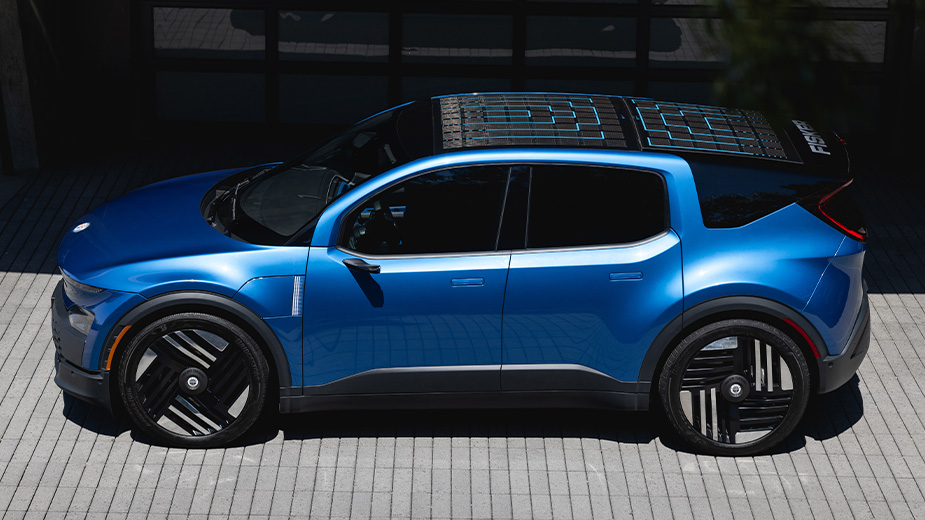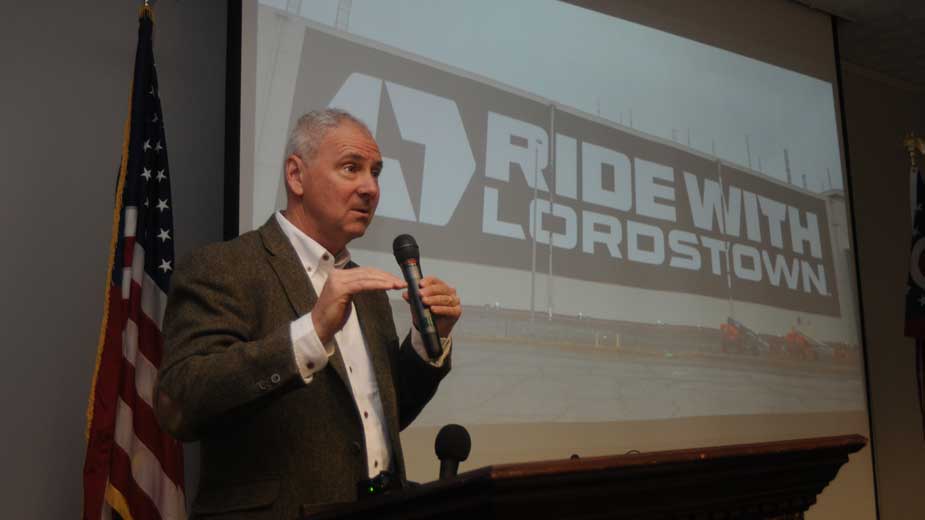Fisker Unveils EV Planned for Foxconn’s Lordstown Plant
YOUNGSTOWN, Ohio – Electric-vehicle manufacturer Fisker Inc. on Thursday unveiled publicly for the first time the compact, tech-heavy and sporty EV crossover that it wants to build at the Foxconn plant in Lordstown.
Fisker founder and CEO Henrik Fisker presented its Pear EV and two future products – the Ronin EV convertible and the Alaska EV pickup – during its first Vision Day event in Los Angeles.
Fisker and Foxconn have an agreement in principle to build the Pear at Foxconn’s Lordstown complex, although no final deal is in place.
“We continue to work with Foxconn on finalizing plans for an innovative manufacturing setup that we will require for this unique engineered Pear,” Fisker told investors during a conference call Friday morning.
“When you deal with contract manufacturing, it’s a little different because you have to go through all the details of each vehicle to understand the exact cost of assembly,” he added.
Fisker and Foxconn formally announced in May 2022 that they planned to partner on production of the Pear at the Lordstown plant, which Foxconn purchased from Lordstown Motors Corp. that same month.
Foxconn bought the 6.2 million-square-foot complex – a former General Motors facility – for $230 million and plans to manufacture multiple EV products at the plant.
Fisker said during the conference call that an announcement on manufacturing sites for the Pear and other vehicles should be forthcoming within three months.
The event Thursday evening in Los Angeles outlined Fisker’s goal of manufacturing three new models over the next several years.
The Fisker Pear – an acronym for Personal Electric Automotive Revolution – is expected to be on sale to consumers by mid-2025, Fisker said. He confirmed that the price tag would begin at $29,900.
Since the vehicle would be built in the U.S., buyers could qualify for a tax credit of up to $7,500 on the EV, Fisker noted.
“That means the price would be $22,400,” he said.
Fisker said the Pear comes equipped with innovative storage capabilities in the front and rear and technical features that are revolutionary for a vehicle this size.
For example, the EV includes a dashboard with additional storage capability and a “Houdini trunk” that doesn’t require a hatch. Instead, the back window automatically slides down and the trunk floor is raised. Once filled, the trunk floor lowers and the window closes.
The Pear also features a “lounge mode” in which the front and back seats are folded back so passengers can relax. The five-seat version of the vehicle comes with a 17.1-inch rotatable screen, “which means you can just lounge in this and watch a movie.” The Pear will also come in a six-seat model.
Also, the exterior design of the vehicle features a wrap-around windscreen that allows drivers a panoramic view that is ideal for driving in the city, Fisker said.
“This vehicle is sitting on a new platform called SLV 1,” he said, meaning Simple, Life and Volume. The design team was able to reduce the parts count in the Pear by 35%, Fisker said, which allows it to reduce manufacturing costs and sell at an affordable price.
“The Pear is our vision of a sustainable EV as a connected mobility device,” Fisker said. The EV would be powered by a new supercomputer that is under development at Fisker, he said.
Burchard Hunche, Fisker’s chief technology officer, said the Fisker Blade is a slim, high-performance computer that governs the vehicle’s Ethernet, 5G connectivity, internet capability and Wi-Fi.
“Every car becomes a mini-data center,” he said. “That’s exciting. No byte is left behind.”
Fisker also introduced two additional models, the Fisker Ronin – an all-electric four-door convertible luxury sports car, and the Fisker Alaska, an all-electric pickup that the company expects to deliver in 2025.
The company also unveiled a new off-road version of its Ocean SUV, which it launched in November. That model, the Force E, is expected to be available during the first quarter of 2024.
Fisker said the company expects to produce between 20,000 and 23,000 Oceans in 2023, mainly because of short-term capacity issues with a supplier. During the second quarter, the company’s contract manufacturer, Magna, produced 1,022 vehicles – 1,009 in July alone.
The Ocean is manufactured at a Magna plant in Granz, Austria.
Pictured at top: In this image captured from video, Fisker founder and CEO Henrik Fisker introduces the Pear EV.
Copyright 2024 The Business Journal, Youngstown, Ohio.



